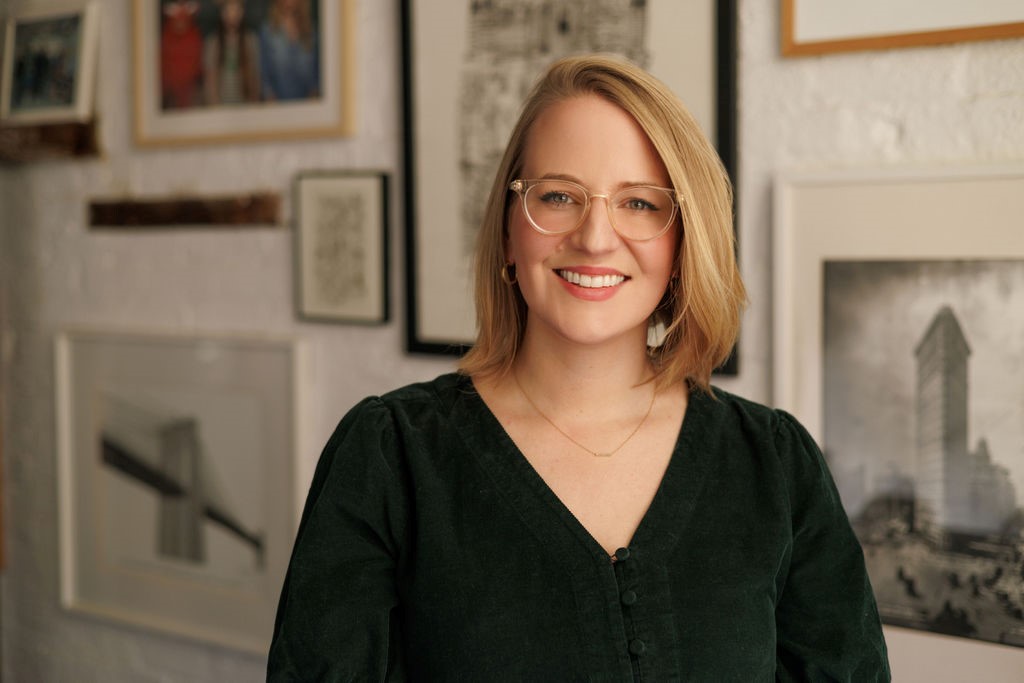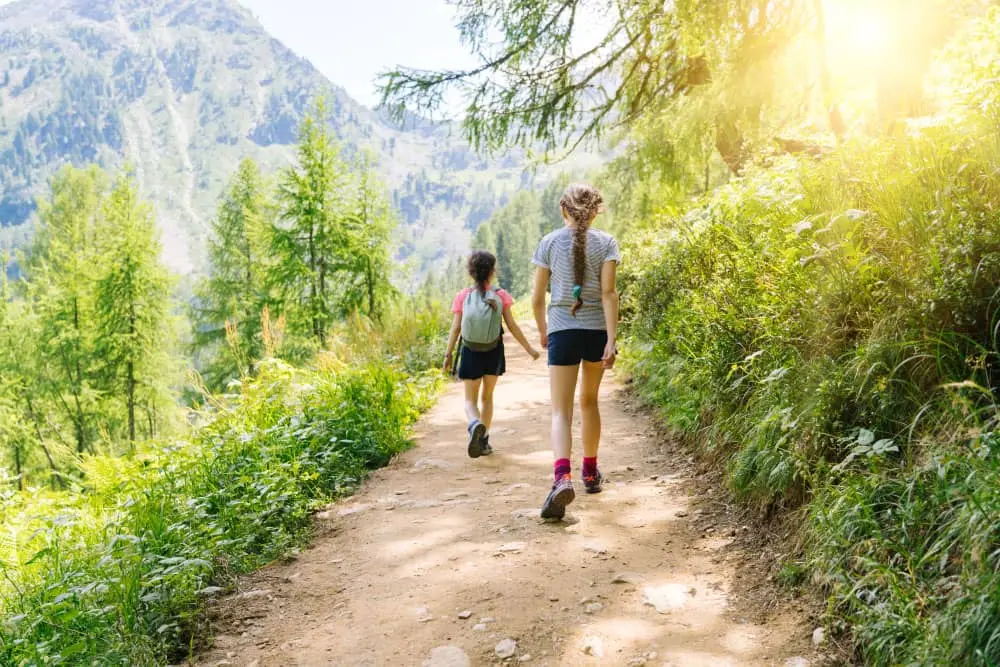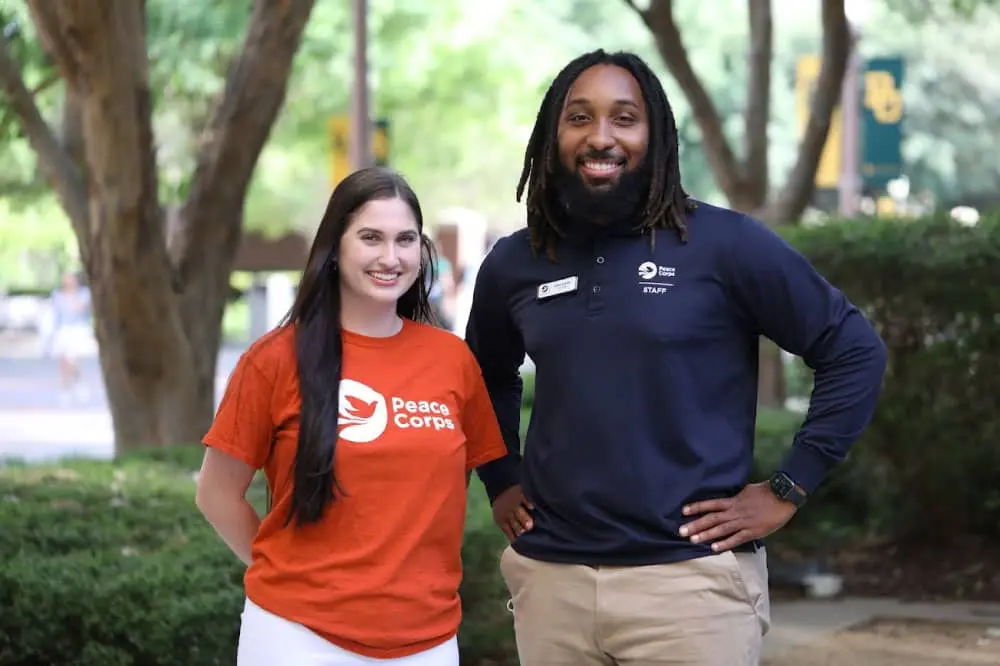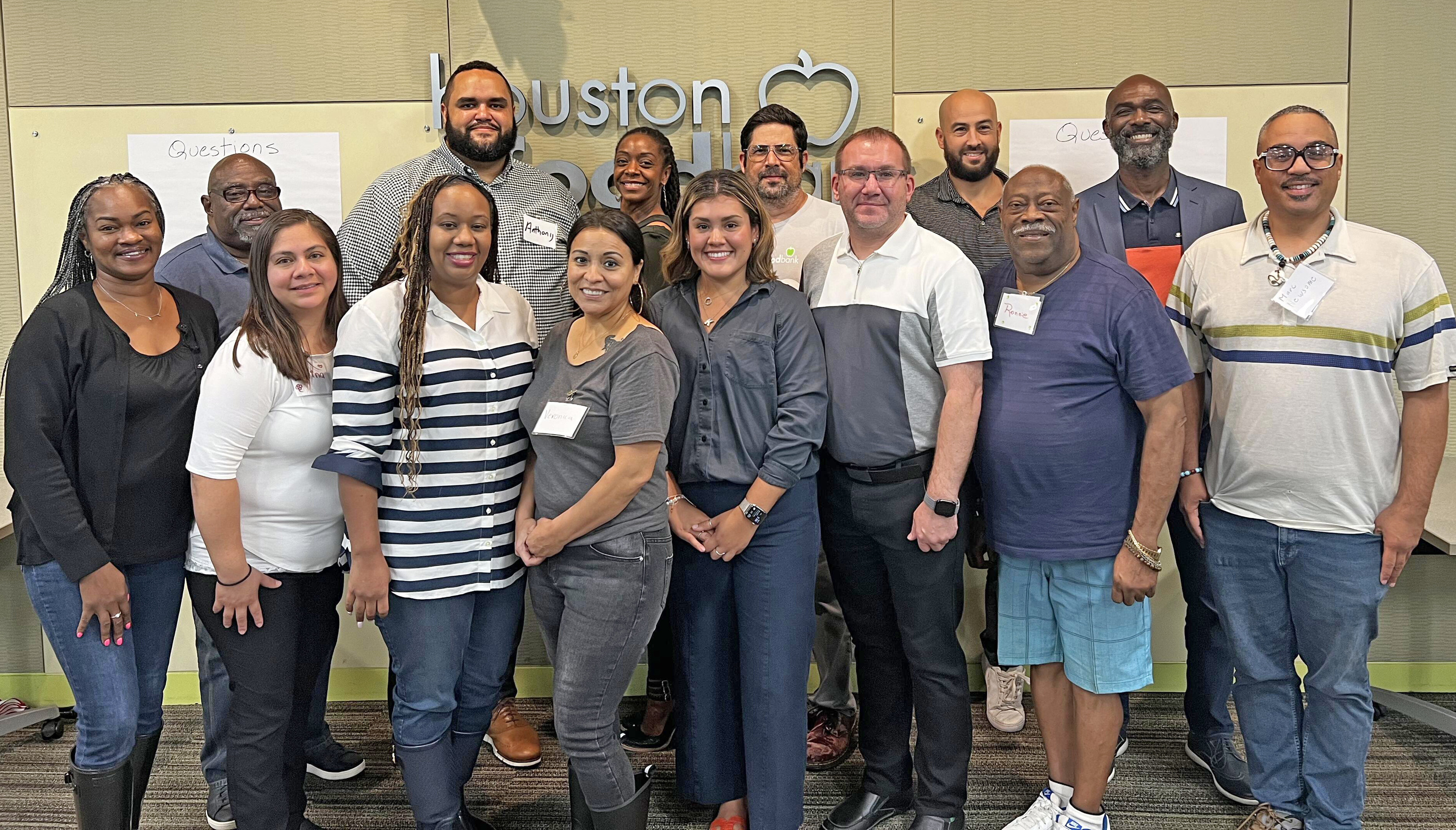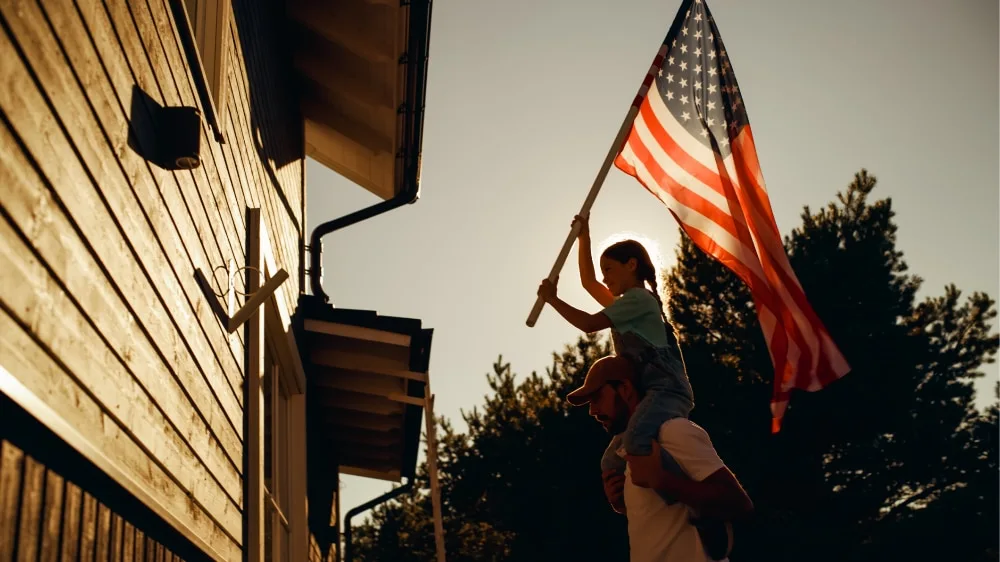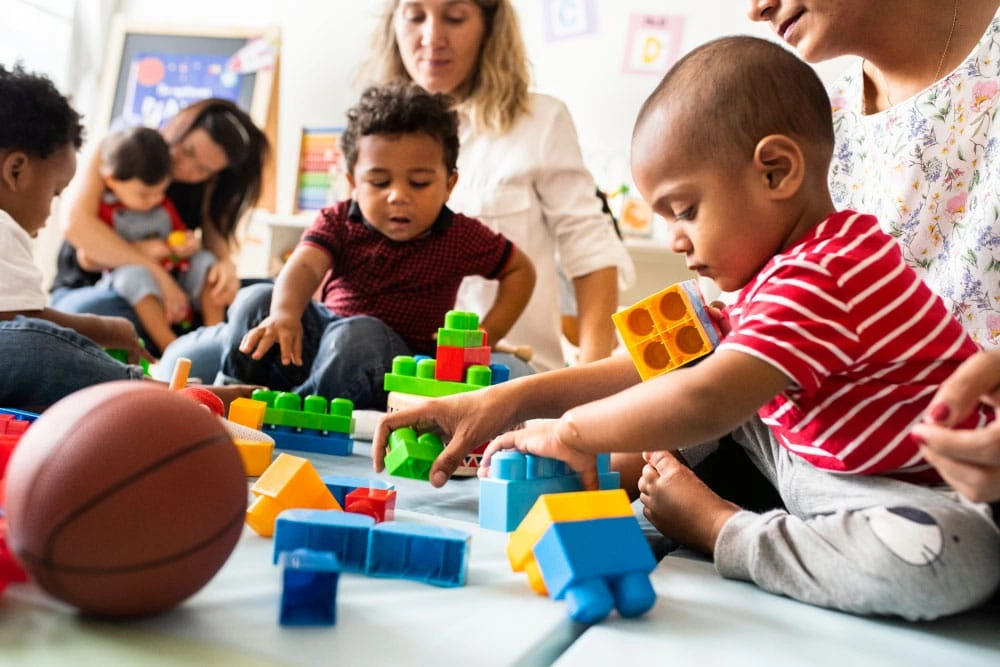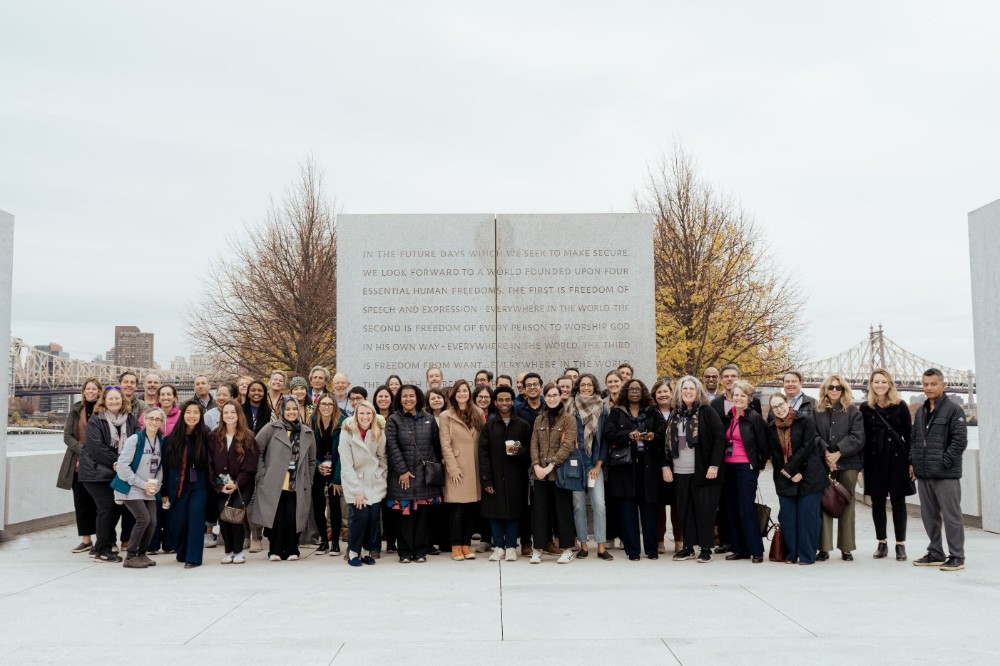Casper ter Kulie and Melanie Kahl -
Aug 28, 2024
Guncles, Godmothers, and the Need for More Good Adults In Kid’s Lives
Guncles, Godmothers, and the Need for More Good Adults In Kid’s Lives
This piece by Casper ter Kulie and Melanie Kahl was originally published on Casper ter Kuile’s newsletter.
Imagine a newborn is delivered safely into the world. Coming home, she is welcomed by multiple loving adults who dedicate their care to this little one’s well being. Her parents are nurtured not just with meal trains in the first few weeks, but ongoing and skilled childcare, festive celebrations, and the joy of seeing their daughter forming loving bonds with trusted adults: an auntie, two guncles, godparents who live far away but show up when it matters, and a grandparent-like figure who lives down the block. As the years pass, these kinfolk take the kids on special outings, develop decades-long in-jokes, provide financial support, and form a modern village that inspires, encourages, educates, and loves the child into being.
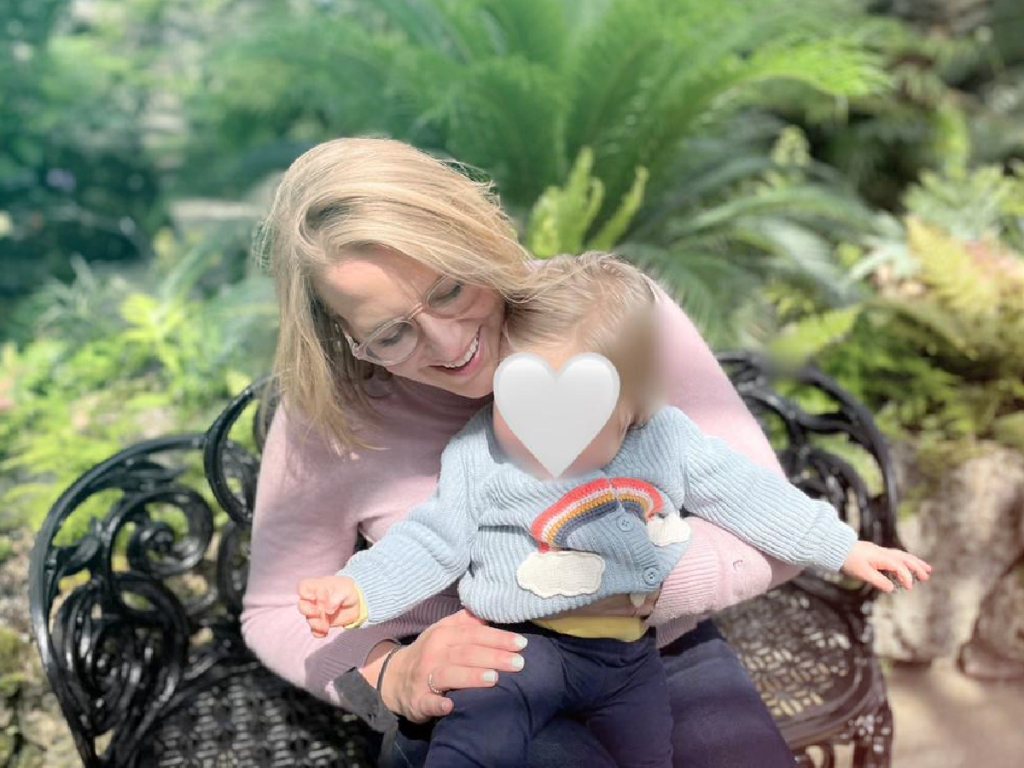 Kids need concentric circles of care. A recent report by researchers from Harvard University argues what we already know: it takes a village to raise a child. Scholars found that a core ingredient for positive childhood experiences is having at least two non-parental adults who take a genuine interest in the child. Strangely, this category of collateral kin is woefully understudied: less than 1% of kinship research focuses on uncles, aunts, godparents, and other important adults. We’re left with a significant imbalance between what people consider important in their lives, and what social scientists tend to study. New research on Early Relational Health encourages villages—but what does that practically look like?
Kids need concentric circles of care. A recent report by researchers from Harvard University argues what we already know: it takes a village to raise a child. Scholars found that a core ingredient for positive childhood experiences is having at least two non-parental adults who take a genuine interest in the child. Strangely, this category of collateral kin is woefully understudied: less than 1% of kinship research focuses on uncles, aunts, godparents, and other important adults. We’re left with a significant imbalance between what people consider important in their lives, and what social scientists tend to study. New research on Early Relational Health encourages villages—but what does that practically look like?
There are few cultural categories or social scripts for village-making and creative kinship after those early meal trains wind down.
A village of support is, of course, nothing new. And many communities still have flourishing networks of care. But two-thirds of American parents report feeling isolated and lonely. 76% express concern for their children’s social life or development. Inconsistent paid parental leave means parents lack the time to invest in healthy child development. The prevalence of postpartum depression has more than doubled in the last decade. Meanwhile, the broader networks of support one might have turned to are disappearing fast: religious congregational membership has fallen below 50% for the first time in recorded American history. Membership in volunteer organizations, unions, and other neighborhood clubs are all down.
So we’re left with a paradox. On the one hand, families are struggling and our kids are suffering. But on the other hand, we have a hidden surplus of potential creative caregiving. The number of childless adults is growing: partly because of record low fertility rates, and partly because more and more Americans are choosing to not have children. A stunning 44% of childless adults under 50 expect not to have kids.
Parents clearly need help. Meanwhile trusted adults have capacity to support. But both sets of adults struggle to offer and ask for the help that could transform the lives of our children. We lack the social scripts that legitimize and simplify the involvement of non-parental family caregivers.
But spend an hour on tiktok and you’ll find the most precious examples of love and support. An aunt who goes deep into the scratchy bushes to retrieve the baseball her nephew hit for his first home run. The uncle who writes a song for his newborn niece. Godparents who create a summer camp experience each year with ever-increasingly epic themes. All over the country, creative, dedicated caregivers are showing up and sharing their love, humor, practical help, and wisdom to support kids who they can now claim, in some way, as their own. These are what family relations scholar Robert Milardo calls the “forgotten kin”: aunts, uncles, godparents, neighbors, and many more, who are showing us what is possible when we cultivate legitimized and generative roles for safe, loving adults in the lives of our country’s children.
- They bolster transitions–into a new school, the birth of a sibling, moving house, learning to drive, the first heartbreak–and boost resilience in times of crisis.
- They support healthy identity formation–offering chances to explore new interests, sharing their own passions, and offering educational experiences that parents might not be able to afford or have access to.
- They model healthy relationships and form the intergenerational links that we know prove vital to the thriving of young people later in life.
But how can parents ask for the help they need? How might they know what is possible? And how can other trusted adults creatively support the kids they love? What roles might they embrace?
Below are ten striking examples of how kinfolk are showing up.
This piece by Casper ter Kulie and Melanie Kahl was originally published on Casper ter Kuile’s newsletter.
Imagine a newborn is delivered safely into the world. Coming home, she is welcomed by multiple loving adults who dedicate their care to this little one’s well being. Her parents are nurtured not just with meal trains in the first few weeks, but ongoing and skilled childcare, festive celebrations, and the joy of seeing their daughter forming loving bonds with trusted adults: an auntie, two guncles, godparents who live far away but show up when it matters, and a grandparent-like figure who lives down the block. As the years pass, these kinfolk take the kids on special outings, develop decades-long in-jokes, provide financial support, and form a modern village that inspires, encourages, educates, and loves the child into being.
 Kids need concentric circles of care. A recent report by researchers from Harvard University argues what we already know: it takes a village to raise a child. Scholars found that a core ingredient for positive childhood experiences is having at least two non-parental adults who take a genuine interest in the child. Strangely, this category of collateral kin is woefully understudied: less than 1% of kinship research focuses on uncles, aunts, godparents, and other important adults. We’re left with a significant imbalance between what people consider important in their lives, and what social scientists tend to study. New research on Early Relational Health encourages villages—but what does that practically look like?
Kids need concentric circles of care. A recent report by researchers from Harvard University argues what we already know: it takes a village to raise a child. Scholars found that a core ingredient for positive childhood experiences is having at least two non-parental adults who take a genuine interest in the child. Strangely, this category of collateral kin is woefully understudied: less than 1% of kinship research focuses on uncles, aunts, godparents, and other important adults. We’re left with a significant imbalance between what people consider important in their lives, and what social scientists tend to study. New research on Early Relational Health encourages villages—but what does that practically look like?
There are few cultural categories or social scripts for village-making and creative kinship after those early meal trains wind down.
A village of support is, of course, nothing new. And many communities still have flourishing networks of care. But two-thirds of American parents report feeling isolated and lonely. 76% express concern for their children’s social life or development. Inconsistent paid parental leave means parents lack the time to invest in healthy child development. The prevalence of postpartum depression has more than doubled in the last decade. Meanwhile, the broader networks of support one might have turned to are disappearing fast: religious congregational membership has fallen below 50% for the first time in recorded American history. Membership in volunteer organizations, unions, and other neighborhood clubs are all down.
So we’re left with a paradox. On the one hand, families are struggling and our kids are suffering. But on the other hand, we have a hidden surplus of potential creative caregiving. The number of childless adults is growing: partly because of record low fertility rates, and partly because more and more Americans are choosing to not have children. A stunning 44% of childless adults under 50 expect not to have kids.
Parents clearly need help. Meanwhile trusted adults have capacity to support. But both sets of adults struggle to offer and ask for the help that could transform the lives of our children. We lack the social scripts that legitimize and simplify the involvement of non-parental family caregivers.
But spend an hour on tiktok and you’ll find the most precious examples of love and support. An aunt who goes deep into the scratchy bushes to retrieve the baseball her nephew hit for his first home run. The uncle who writes a song for his newborn niece. Godparents who create a summer camp experience each year with ever-increasingly epic themes. All over the country, creative, dedicated caregivers are showing up and sharing their love, humor, practical help, and wisdom to support kids who they can now claim, in some way, as their own. These are what family relations scholar Robert Milardo calls the “forgotten kin”: aunts, uncles, godparents, neighbors, and many more, who are showing us what is possible when we cultivate legitimized and generative roles for safe, loving adults in the lives of our country’s children.
- They bolster transitions–into a new school, the birth of a sibling, moving house, learning to drive, the first heartbreak–and boost resilience in times of crisis.
- They support healthy identity formation–offering chances to explore new interests, sharing their own passions, and offering educational experiences that parents might not be able to afford or have access to.
- They model healthy relationships and form the intergenerational links that we know prove vital to the thriving of young people later in life.
But how can parents ask for the help they need? How might they know what is possible? And how can other trusted adults creatively support the kids they love? What roles might they embrace?
Below are ten striking examples of how kinfolk are showing up.
This piece by Casper ter Kulie and Melanie Kahl was originally published on Casper ter Kuile’s newsletter.
Imagine a newborn is delivered safely into the world. Coming home, she is welcomed by multiple loving adults who dedicate their care to this little one’s well being. Her parents are nurtured not just with meal trains in the first few weeks, but ongoing and skilled childcare, festive celebrations, and the joy of seeing their daughter forming loving bonds with trusted adults: an auntie, two guncles, godparents who live far away but show up when it matters, and a grandparent-like figure who lives down the block. As the years pass, these kinfolk take the kids on special outings, develop decades-long in-jokes, provide financial support, and form a modern village that inspires, encourages, educates, and loves the child into being.
 Kids need concentric circles of care. A recent report by researchers from Harvard University argues what we already know: it takes a village to raise a child. Scholars found that a core ingredient for positive childhood experiences is having at least two non-parental adults who take a genuine interest in the child. Strangely, this category of collateral kin is woefully understudied: less than 1% of kinship research focuses on uncles, aunts, godparents, and other important adults. We’re left with a significant imbalance between what people consider important in their lives, and what social scientists tend to study. New research on Early Relational Health encourages villages—but what does that practically look like?
Kids need concentric circles of care. A recent report by researchers from Harvard University argues what we already know: it takes a village to raise a child. Scholars found that a core ingredient for positive childhood experiences is having at least two non-parental adults who take a genuine interest in the child. Strangely, this category of collateral kin is woefully understudied: less than 1% of kinship research focuses on uncles, aunts, godparents, and other important adults. We’re left with a significant imbalance between what people consider important in their lives, and what social scientists tend to study. New research on Early Relational Health encourages villages—but what does that practically look like?
There are few cultural categories or social scripts for village-making and creative kinship after those early meal trains wind down.
A village of support is, of course, nothing new. And many communities still have flourishing networks of care. But two-thirds of American parents report feeling isolated and lonely. 76% express concern for their children’s social life or development. Inconsistent paid parental leave means parents lack the time to invest in healthy child development. The prevalence of postpartum depression has more than doubled in the last decade. Meanwhile, the broader networks of support one might have turned to are disappearing fast: religious congregational membership has fallen below 50% for the first time in recorded American history. Membership in volunteer organizations, unions, and other neighborhood clubs are all down.
So we’re left with a paradox. On the one hand, families are struggling and our kids are suffering. But on the other hand, we have a hidden surplus of potential creative caregiving. The number of childless adults is growing: partly because of record low fertility rates, and partly because more and more Americans are choosing to not have children. A stunning 44% of childless adults under 50 expect not to have kids.
Parents clearly need help. Meanwhile trusted adults have capacity to support. But both sets of adults struggle to offer and ask for the help that could transform the lives of our children. We lack the social scripts that legitimize and simplify the involvement of non-parental family caregivers.
But spend an hour on tiktok and you’ll find the most precious examples of love and support. An aunt who goes deep into the scratchy bushes to retrieve the baseball her nephew hit for his first home run. The uncle who writes a song for his newborn niece. Godparents who create a summer camp experience each year with ever-increasingly epic themes. All over the country, creative, dedicated caregivers are showing up and sharing their love, humor, practical help, and wisdom to support kids who they can now claim, in some way, as their own. These are what family relations scholar Robert Milardo calls the “forgotten kin”: aunts, uncles, godparents, neighbors, and many more, who are showing us what is possible when we cultivate legitimized and generative roles for safe, loving adults in the lives of our country’s children.
- They bolster transitions–into a new school, the birth of a sibling, moving house, learning to drive, the first heartbreak–and boost resilience in times of crisis.
- They support healthy identity formation–offering chances to explore new interests, sharing their own passions, and offering educational experiences that parents might not be able to afford or have access to.
- They model healthy relationships and form the intergenerational links that we know prove vital to the thriving of young people later in life.
But how can parents ask for the help they need? How might they know what is possible? And how can other trusted adults creatively support the kids they love? What roles might they embrace?
Below are ten striking examples of how kinfolk are showing up.
Top Ten Tips For Kinfolk
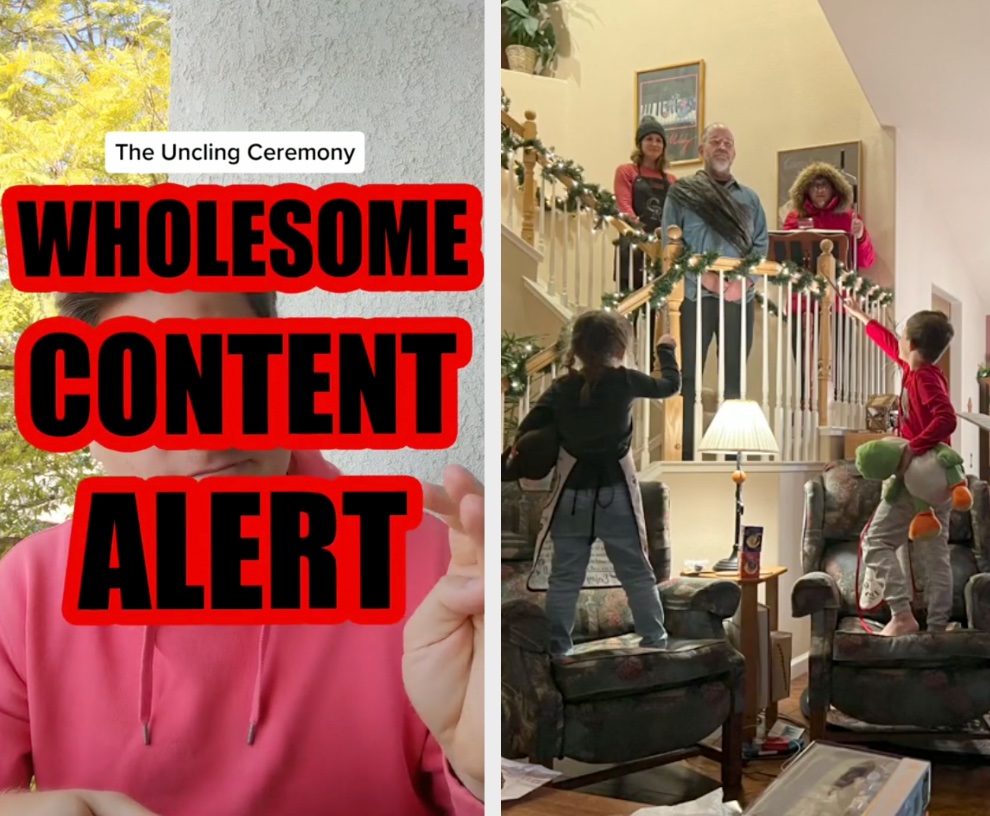
1. Make It Official: The Uncling Ceremony
We’re inspired by: The Uncling Ceremony.
How do you step into your role as an Aunt or Uncle when it’s by choice, not birth? Enter: The Uncling Ceremony. It’s a cheeky tale of a person playing an uncle figure to young kids (a boyfriend of the aunt) transitioning officially into his role of Uncle. Atop stairs, donning aprons, with “spellbook” in hand— they cast a spell that transforms Boyfriend Dan into Uncle Dan. Stuffed animals are tossed and nephews are hugged. It’s official.
While the transition is more explicit for blood relatives and godparents to have cards, official scripts, and tips— there is less precedent for these secondary figures. When Mel’s college best friend told her daughter (aged 6) that she had become an official aunt with the birth of her niece, Gemma—she looked at her mom, confused—“I thought Mel was already our auntie?” Whether chosen family or family folded in— this distinction is slippery. Marking it amplifies the moment—and perhaps invites a sense of commitment.
We’re asking: How might we mark one’s transition into the role of aunt/uncle/or unofficial godparent? Whether silly or serious, how might you invite someone into this role? What would be in your spell or vow?
2. Care Together: Life Villages & God Boards
We’re inspired by: The Life Village, God Boards.
Everyone wants to feel the care of a collective—especially when they have a child. “The Life Village” is a model sparked by a UK family living far away from their own community—putting a “it takes a village” proverb into practice. Now, it’s a simple model that consists of an invitation, an offer of skills, and a semi-regular life village gathering.
Ted and Franzi Gonder also tapped into the collective when they formed a “God Board of Directors” for their three sons. They were seeking a philosophical alternative to godparents and invited a group of six or so friends to guide the lives of their three boys. In addition to their relationship with their sons, this group actively advises big parental questions.
Spiritual leaders, too, can expand this notion of village. We talked to Reverend Liz Clutterbuck about expanding traditional baptisms. To welcome a larger community of care around a child, she has had folks write a letter to seal their intention if they prefer secular language.
We’re asking: What would it look like to invite a group into the development of your children? Your parenting? What opportunities might a shared commitment offer parents and friends?
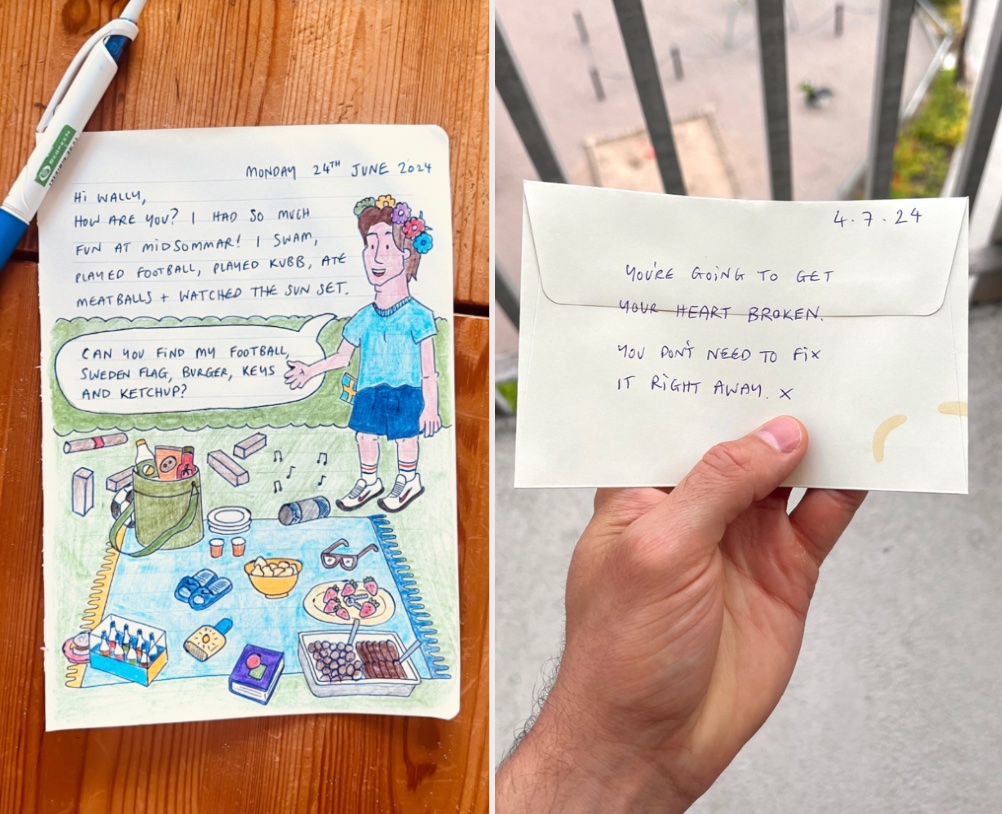
3. Pick Up The Pen: Letters To Littles
We’re inspired by: Cameron’s Illustrated Letters & Liz’s Letters to Hadley.
Letters offer a way to stay in touch with each other and the things that matter most.
Designer and writer, Cameron Henderson, sends illustrated letters to his nephew about his life in Sweden. Comic scenes, paper airplane instructions, and seeds of stories— his letters playfully chronicle his everyday life, and he often draws his nephew into the scene. The practice sparked the start of a children’s book series.
From zits to impermanence, elegance to intuition— Aunt Liz’s letters to her first niece are a stunning epistolary of auntie love and womanhood. The letters have fragments of poetry, memories, and guidance. This surely will be a trove, especially as her niece evolves.
We’re asking: If you had to write a letter to your little one, what would you say? What cadence or form feels right to you? What practice feels sustainable and natural?

4. Wear Your Love: Friendship Bracelets And New Kicks
We’re inspired by: Priyanka’s friendship bracelets, Shanika’s charms, & new kicks from Justine.
Matching with littles is another way to wear your heart on your sleeve. Several folks mentioned more fashionable ways to feel connected.
Priyanka, an auntie figure to her best friends’ children, continued the woven friendship bracelet tradition of their youth to the next generation. Each summer, she makes bracelets in their favorite colors. They are fun to get in the mail, and a wearable reminder of intergenerational friendship. Shanika— a stylish and committed auntie—wanted to be reminded of her nephew. She added special charms—like a lego and dinosaur—to her charm necklace to keep him close.
Justine, an auntie in NYC, keeps her kiddos in fresh kicks. One of her favorite gifts she’s given is a semi-annual pair of shoes for each niece and nephew. It’s a practical way to help with an expense, and a playful way to be present in littles’ daily lives.
We’re asking: Whether symbolic, silly, practical or fashionable, what’s a wearable gift that you can share? Is this something that can happen on an annual basis? Homemade?
5. Camp!: Crafting Immersive Experiences
We’re inspired by: Camp Tener and Autumn’s Auntie Camp
Summertime is for making memories. Immersive experiences give your littles (and their caregivers) a break from everyday life—deepening relationships and expanding horizons.
Every year, Mel and her twin brother were lucky to attend “Camp Tener.” It was an anticipated adventure hosted by her godmother Auntie Robin (mom’s best college friend) and Uncle Dean. Each year had a theme—from Outer Space to Italian Summer to Michigan vs Ohio. They’d get questionnaires beforehand and cassette tapes to accompany their road trips with custom songs and quizzes. During those summers, they’d have many firsts: learning how to can homemade jam and taking out a car engine. A way to be creative together, Robin and Dean would begin planning for next summer the moment the kids pulled out of the driveway—”’Camp Tener’ days were some of the best times of our lives,” they shared with Mel in a recent conversation.
Sometimes camp emerges organically. When Autumn’s niece’s camp was canceled unexpectedly, she used her community design skills to host Auntie Camp. The adventure marked her 13-year-old niece’s first airplane ride—and the highlight of both of their summers.
We’re asking: What multi-day creative experience can you offer that shares your passions and interests? A wilderness adventure to learn how to identify local flora and fauna? Sampling the best museums as a way into art history? A comic book or drag convention?
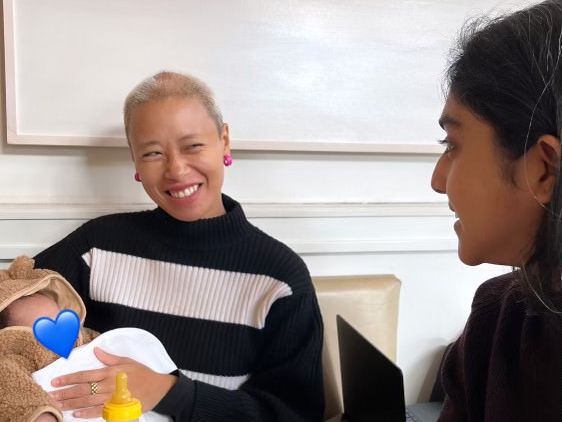
6. Create Caring Cadences Like Breakfast Clubs
We’re inspired by: Neha’s breakfast tradition with her new mom friend
Transitioning into parenthood can also feel isolating and the shift in identity—especially for mothers—can be both beautiful and daunting. Neha, a design strategist, shared how her trio supported their friend through the transition—beginning with a casual breakfast ritual.
On Wednesdays, the Brooklyn friends meet—passing a baby catching up on the latest from the studio and the nursery alike. The ritual of connection offers opportunities to be closer as friends, but also to extend care. Now, Neha’s started babysitting—giving her new mom friend 2-hour breaks and soaking up infant joy.
We can lose friends to life changes or care for them through the transformation. Neha remarks that caring for her friend’s baby is “a way to express my care for the friendship.” With her family far away in India, intergenerational care makes Brooklyn feel more like a community.
We’re asking: How might we better care for our friends through transitions? What cadences of connection can accommodate both parent and child? What does proximity allow?
7. Celebrate: Marking Minor Milestones and In-Betweens
We’re inspired by: Annette and Shona on TikTok
Birthdays and major holidays like Christmas or birthdays will facilitate the giving of gifts, but for many godparents and other kinfolk, minor milestones may offer hidden opportunities for meaningful bonds.
Annette made a shift for her nieces. She “went small” on gifts for the major holidays, and opted to send care packages for Back-to-School and Valentine’s Day instead. By amplifying in-between celebrations, she made them more meaningful and personal.
Shona wanted to spoil her Nephew, who craved a designer cologne far out of budgetary reach. Looking for an occasion (and excuse!), she used prom. This marked an under-appreciated moment, and made him the best-smelling teen on the dance floor.
We’re asking: What’s a milestone you can show up for? Prom coming up? Send the first bottle of perfume. First car? Pay for gas for their first road trip. You might even decide to mark a different annual holiday—even if it’s a silly one.
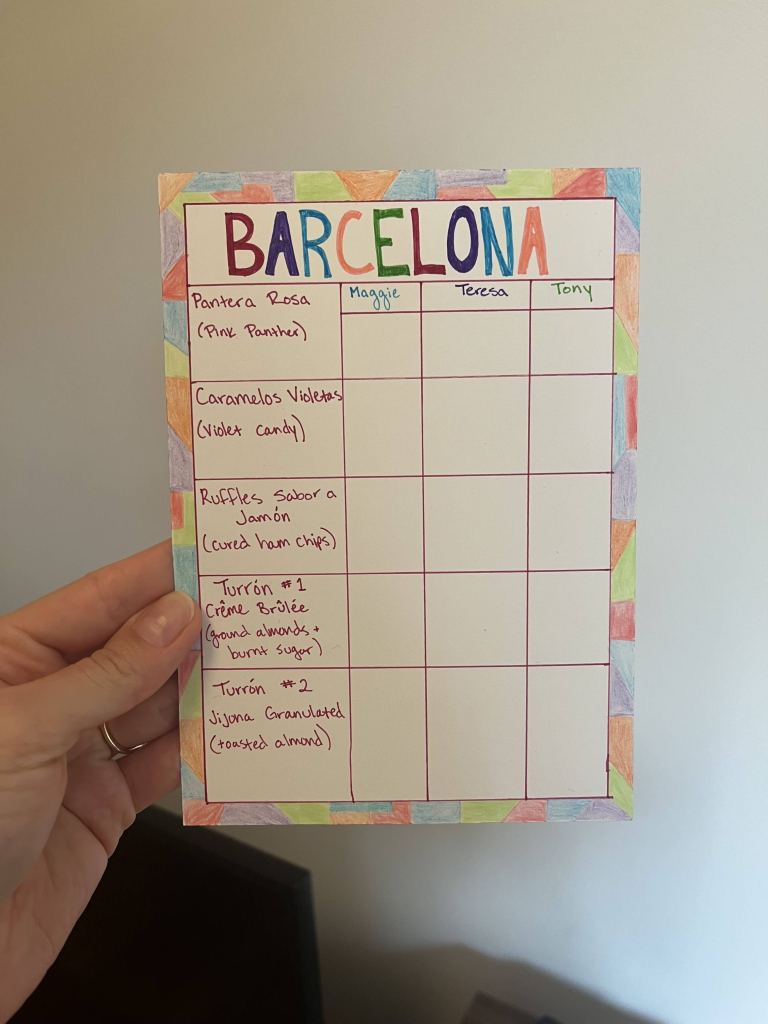
8. Expand Horizons: Travel Together
We’re inspired by: Lorri & Kasey’s culinary travels and Anthony’s time travels
When we asked folks what role they hoped to play in young peoples’ lives, we heard echoes of—”expand,” “expose,” “explore.” Whether their first broadway show or flight to somewhere new, extra adults wanted to enable exploration.
Separated by over 2,000 miles, Auntie Lorri and Uncle Kasey live in Brooklyn and dream of the day they can travel with their littles. In the meantime, they are planting seeds. Lorri subscribed her niece and nephew to an “around the world” snack box and every couple months— they learn about a new culture together through their food (e.g. Universal Yums, Snack Crate). On a recent trip to Spain, they even curated a special culinary souvenir box to share over FaceTime. One day, they’ll globetrot with their niblings. Until then, they will snack and continue tucking money away for their future adventures.
Uncle Anthony likes to time travel with his nephew (and share his hobbies). A Nintendo enthusiast, he rebuilt a 1989 GameBoy to spark the next generation of gaming and tinkering.
We’re asking: What worlds do you have access to—travel, food, music, culture, dance, tech? Find a simple way to share your world or act as a bridge for your little friends’ budding interests.
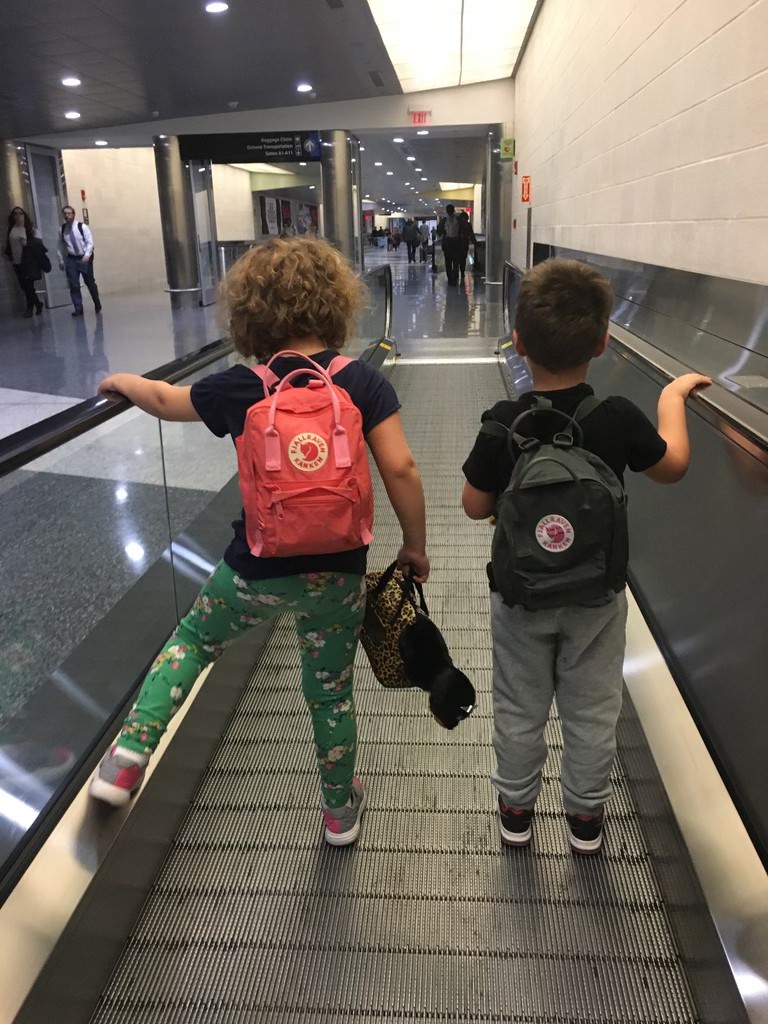
9. Invest In Their Future: Savings Accounts
We’re inspired by: Julka and investing together
We encountered many examples of adults thinking abundantly about their own resources—regardless if they have children of their own.
It turns out it’s surprisingly accessible to have a stash squirreled away for an 18th birthday. Simply open a high-yield savings account or CD when they are born (or soon after) and add every birthday. Depositing $100 a year will grow to nearly $4,000 when they come of age. Or for just a coffee a month, it may be feasible to do this for a handful of kids if you have the means (~$2,000). When you make the gift, you can specify that the money is for travel, education, their first car—or let them choose how to spend it themselves. Take it to the next level by including a few small relevant gifts when you share the money: think a disposable camera, a set of notebooks, or an air freshener.
As the only aunt for her niblings, Julka takes her role very seriously: “I love to do future-oriented things.” When her nephew grew curious about investing, she collaborated with him on a custodial investment account, tending it together. Every year she puts in a small amount into an index fund— and then let’s him pick individual stocks to observe (often based on his likes— Nintendo, McDonalds). Julka has also promised a signature 16th birthday trip for her niece and nephew. While she’s tucking away the finances, they dream up itineraries (Cape Town to see penguins? A road trip in Iceland?) Aunt Julka says, “They change their minds a lot, but they are learning and dreaming ….all of that deciding feels like important learning too.” She wishes it was easier to set-up these accounts as a non-guardian.
We’re asking: Who in your circle do you feel called to invest in? What might you want to fuel in their future— travel, education, a milestone present? How does doing this shift your perspectives on who is in your village?
10. Keep Showing Up: Embrace the Everyday
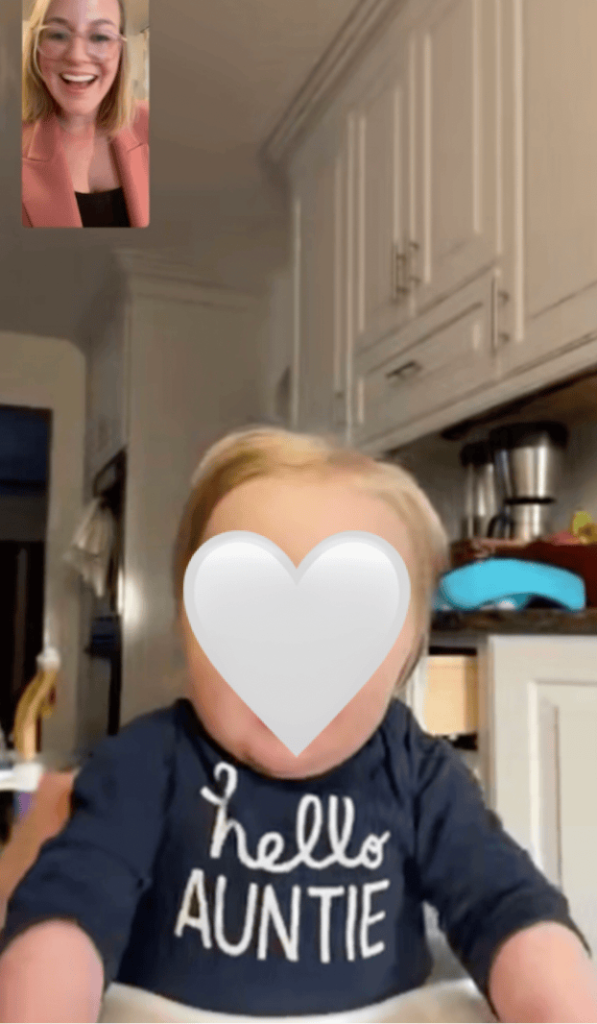
We’re inspired by: All your stories of little things you already do :)
It’s about showing up. Some of the best stories of kinship were the simplest. Being woven into the dailiness looks like: “bedtime FaceTimes,” “calls to celebrate everyday victories,” “chaotic FaceTime tours,” “virtual show and tell,” “silly voice notes and emoji chats,” “running errands together,” or “posting pictures in a shared album.”
Creativity is wonderful, but we sustain relational care through the ordinary. Finding a cadence that helps you witness the unfolding of a young person can give you relational surface area—to start conversations, to grow trust, and to signal that you’ll be there.
We’re asking: How might you embrace the ordinary? What does showing up look like, even when you’re far away? Keep it simple and give yourself grace—but get in your reps.
Do you have any inspiration or reflection? Drop a note here or share on social media and tag @caspertk_ and @melanie_kahl.

